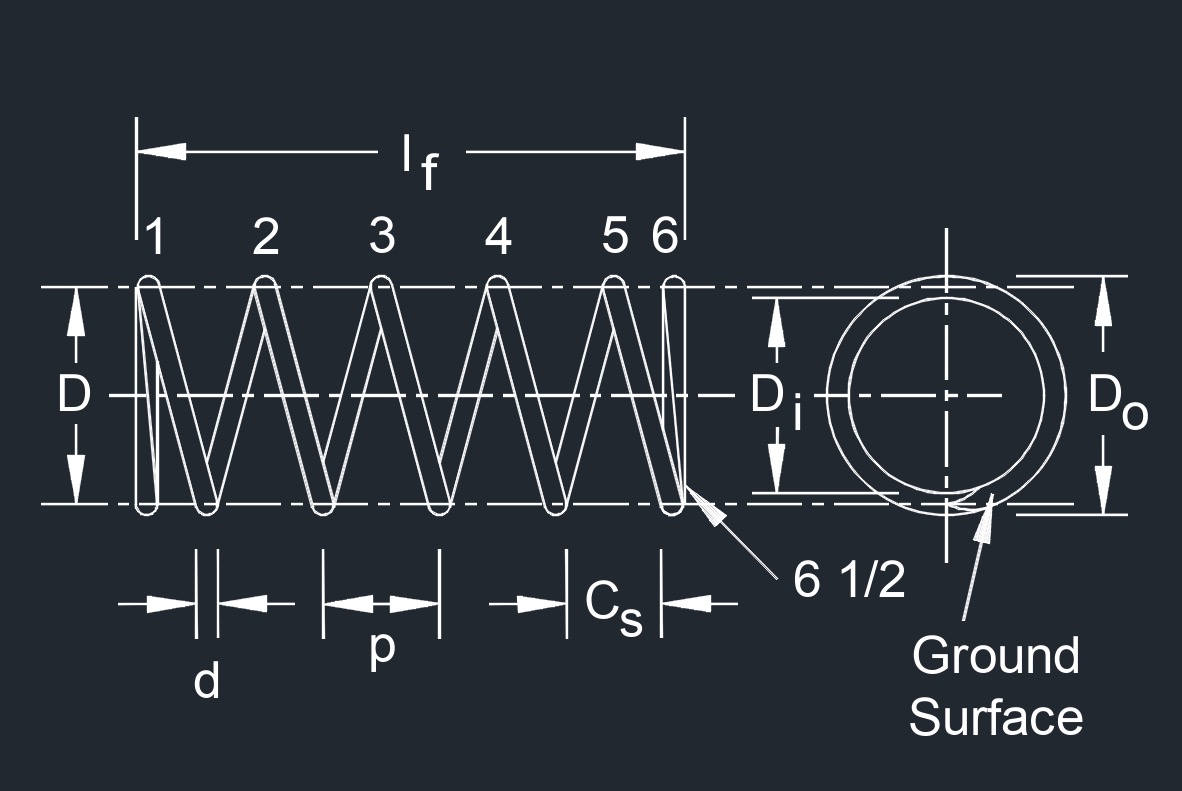Spring Diameter
Spring Diameter Formulas |
||
|
\( D \;=\; D_o - d \) \( D \;=\; D_i + d \) \( D_i \;=\; D_o - 2 \; d \) \( D_o \;=\; D_i + 2 \; d \) \( D_o \;=\; \sqrt{ D^2 + \left( \dfrac{ p^2 - d^2 }{ \pi^2 } \right) } + d \) (When a spring is compressed there is a small increase in \(D_o\). When a spring tolerance is required, this formula will give you the increase in \(D_o\).) |
||
| Symbol | English | Metric |
| \( D \) = mean coil diameter | \( in \) | \( mm \) |
| \( D_i \) = inside diameter | \( in \) | \( mm \) |
| \( D_o \) = outside diameter | \( in \) | \( mm \) |
| \( \pi \) = Pi | \(3.141 592 653 ...\) | \(3.141 592 653 ...\) |
| \( p \) = pitch | \( in \) | \( mm \) |
| \( d \) = wire diameter | \( in \) | \( mm \) |
 Spring diameter is the outer diameter of a helical or coiled spring, which is a mechanical component often used to store and release mechanical energy. The spring diameter is one of the key dimensions of a spring and is typically measured across the widest point of the coiled wire. It plays a crucial role in determining the spring's overall size and how it fits into a mechanical system.
Spring diameter is the outer diameter of a helical or coiled spring, which is a mechanical component often used to store and release mechanical energy. The spring diameter is one of the key dimensions of a spring and is typically measured across the widest point of the coiled wire. It plays a crucial role in determining the spring's overall size and how it fits into a mechanical system.
The spring diameter, along with other factors such as wire diameter, coil pitch, and the number of coils, affects the spring's performance characteristics, including its stiffness, load bearing capacity, and deflection characteristics. Designing a spring with the appropriate spring diameter is essential to ensure that it functions correctly within a given application.
Different types of springs, such as compression springs, extension springs, and torsion springs, may have varying spring diameters depending on their intended use and design requirements. Engineers and designers must carefully consider these dimensions to meet the specific needs of their projects.

